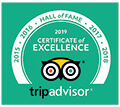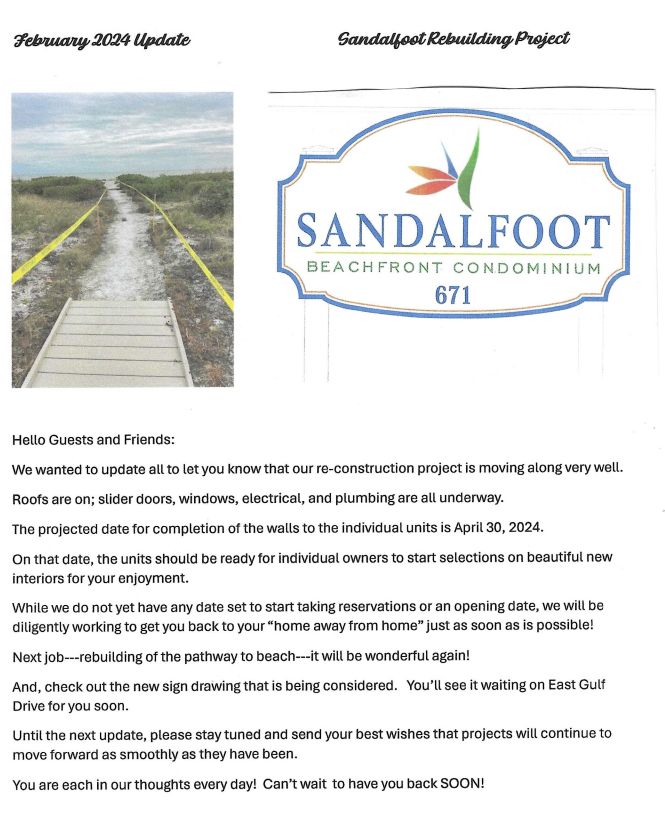Sea Turtles on our Beaches
Sea turtles are among the world’s oldest creatures. These ancient reptiles have long fascinated people around the world. On Sanibel and Captiva, where the beaches provide a subtropical nesting area for threatened loggerhead and endangered green turtles, more than 100 island residents volunteer each summer as part of the Conservation Foundation’s Sea Turtle Research and Monitoring Program. The program operates under a permit from the Florida Fish and Wildlife Conservation Commission.
Each day during nesting season, May to October, the 18 miles of Gulf beaches from the Sanibel Lighthouse to the tip of Captiva are checked beginning at dawn. In some areas, volunteers walk designated zones of beach. On other stretches, the patrol is done by beach vehicle. Nests are identified and marked for monitoring and protection. Later in the season new hatches are evaluated and recorded. The statewide collection of data helps promote programs that improve the chances for sea turtles to survive.
Most nests on Sanibel and Captiva are Loggerhead sea turtles. However there are usually a few Green sea turtle nests and even Kemps Ridley nests and Leatherback sea turtle nests have been spotted in recent years. Please do not disturb the nestling sea turtles. We at Sandalfoot Condominium are honored every year to witness this wonderful process of nature and should respect the sea turtles nestling process. If a sea turtle fails after several nestling attempts, she will eject her eggs into the Gulf and those failed nestling attempts matter greatly.
Sea Turtle Facts
 Sea turtles live their entire life in the ocean except when the female comes ashore to lay eggs. Males rarely leave the water.
Sea turtles live their entire life in the ocean except when the female comes ashore to lay eggs. Males rarely leave the water.- Adults can grow to more than three feet in length and weigh between 250 and 400 pounds.
- Female loggerheads emerge at night to lay from 50 to 175 leathery, ping-pong ball sized eggs. The eggs will hatch 55 to 60 days later.
- Temperature plays a role in whether eggs develop as male or female. Warmer temperatures tend to mean more females, cooler more males.
- Hatchlings emerge from the nest at night and use the light of the horizon to orient themselves to the water.
- Hatchlings weigh less than one ounce and are two inches long.
- Sea turtles have great underwater vision but are nearsighted out of the water.
The Sea Turtle Nesting Season Began a Little Early in Southwest Florida
Turtle experts say milder weather this winter kept the Gulf of Mexico warmer, and that’s why they think the turtles are nesting sooner. Turtles typically start nesting when the water temperature reaches 80 degrees.
Sea turtle nesting season has returned to Sanibel’s beaches and the City of Sanibel, in partnership with the Sanibel-Captiva Conservation Foundation (SCCF), continues its commitment to protect these threatened and endangered species.
Nesting and hatchling emergence will occur between May 1 and October 31 and we ask all residents and visitors to follow the guidelines below to help us ensure a successful nesting season.
The nesting ritual of the loggerhead sea turtle is one of the most remarkable natural phenomena occurring on Sanibel’s Gulf beaches. This natural process has happened on Sanibel for centuries and our eleven miles of Gulf shoreline have more nesting activity than any other beach in Lee County. The rare opportunity to witness this ritual on a dark summer night is both an honor and a great responsibility. Sought by predators and susceptible to dehydration, sea turtle hatchlings have only a 1 in 1,000 chance of survival. Human activities can further reduce that chance.
WHAT YOU CAN DO
By following these simple guidelines, you can do your part to ensure the survival of these magnificent creatures:
• Turn off or shield lights near the beaches. Artificial beach lighting can inhibit female sea turtles from nesting and disorient hatchlings. Most beachfront lighting issues can be addressed by turning off all unnecessary lights, repositioning or modifying light fixtures, or closing blinds and drapes.
• Remove furniture and other items from the beach and dune area, when not in use, between the hours of 9 p.m. and 7 a.m. Items left on the beach — including beach furniture, toys and trash — may provide barriers to nesting or result in entanglement and predation of hatchlings.
• Level all sandcastles and fill any holes dug during play. These are fine during the day but may pose additional hazards at night. Please leave the beach as you found it, so that sea turtles and hatchlings are not hindered on their way to nest or to the water.
• Pick up all trash. Sea turtles mistakenly eat debris, especially plastic, which results in death.
• Honor the leash law. All dogs on the beach must be on a leash and not allowed to disturb nesting turtles or hatchlings.
Gulf-front property owners should make sure that their properties are in compliance with the City’s marine turtle protection ordinances and ensure that artificial lighting from the property is not illuminating the beach (Sanibel Code Section 74-181-74-183, Section 126-996-126-1002).
An easy way to test if your property is in compliance is to stand on the beach on a moonless night and look seaward. If you can see your shadow cast towards the water, there is too much light behind you. This light could potentially deter female turtles from nesting or disorient hatchlings as they emerge from the nest.
We look forward to another successful sea turtle nesting season and hope to uphold Sanibel’s reputation as having one of the darkest and most “turtle friendly” beaches in the state. We ask for your continued compliance with City’s marine turtle protection ordinances and remind all residents and visitors that violations of these ordinances may be subject to City, State and/or Federal fines and penalties.
Violations should be reported immediately to the Sanibel Police Department at 472-3111, Sanibel Code Enforcement 472-4136 or Natural Resources at 472-3700.
For more information regarding sea turtles on Sanibel, please visit the City’s website at mysanibel.com/Departments/Natural-Resources/Protecting-Our-Beaches/Sea-Turtles or you can also visit the Sanibel-Captiva Conservation Foundation at https://www.sccf.org/.
Sandalfoot Condominium – Every vacation rental condominium offers a stunning view of the Gulf of Mexico, is completely and comfortably appointed with everything you’ll need to feel right at home. All of our 1 and 2-Bedroom rental condominiums are non-smoking. Relax and spend lazy days sunning or shelling on one of the best shelling beaches of the world; take a dip in our pool or perhaps play a friendly game tennis or shuffleboard; bike the island trails, fish right from the beach, tee-off at a near-by golf course or go birding at J.N. “Ding” Darling National Wildlife Refuge – the possibilities are endless! With so much to offer, Sandalfoot Condominium is the best value for your vacation rental on Sanibel Island.
We would like to invite you to take a few moments to Like our facebook fanpage, follow us on twitter (we’ll follow you back), sign up for our newsletter and subscribe to our blog.
Call 1-800-725-2250 to book your vacation now!










